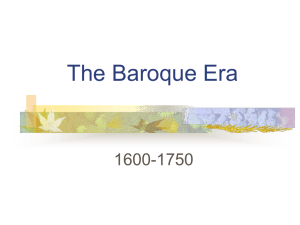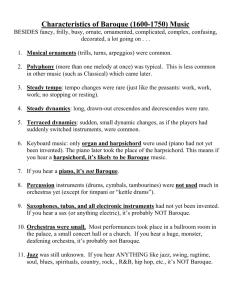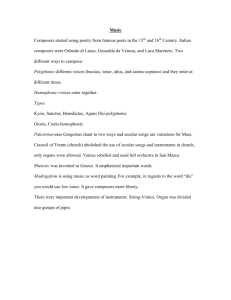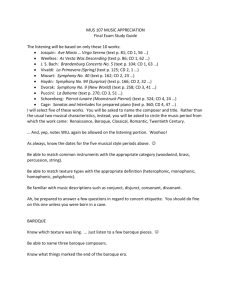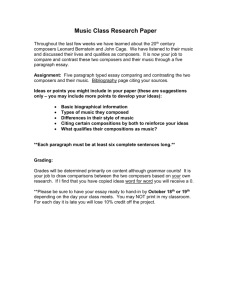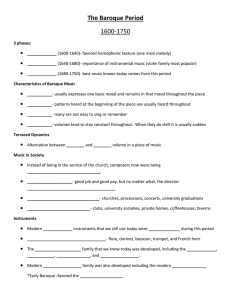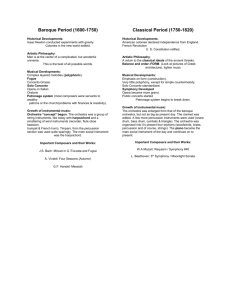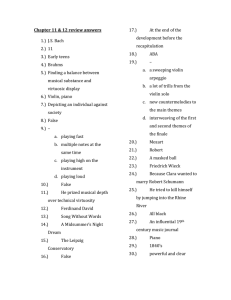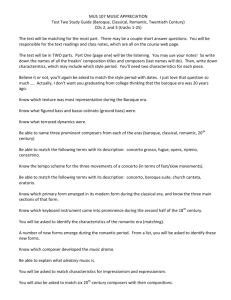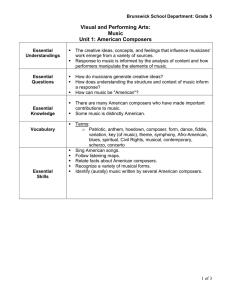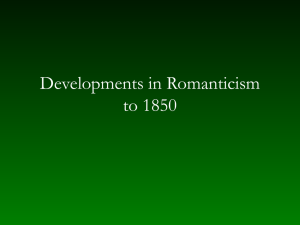The Baroque Period
advertisement
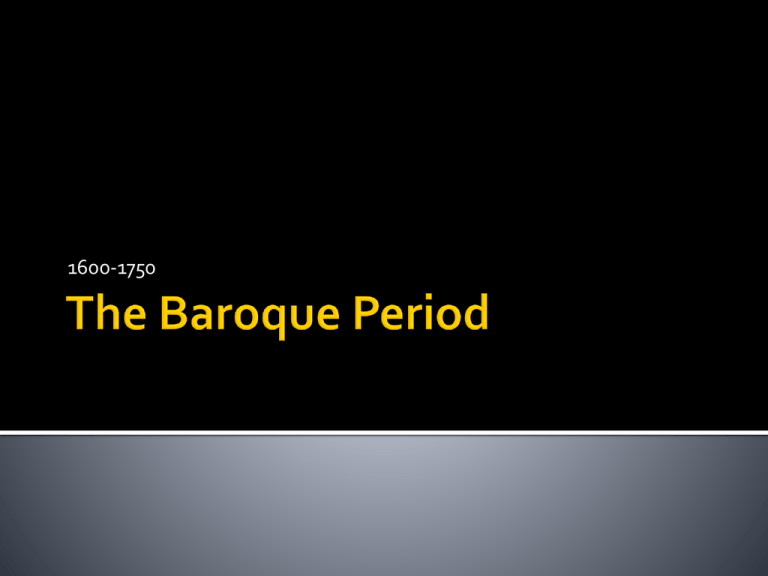
1600-1750 Early (1600-1640)- favored homophonic texture (one main melody) Middle (1640-1680)- importance of instrumental music (violin family most popular) Late (1680-1750)- best music known today comes from this period Mood- usually expresses one basic mood and remains in that mood throughout the piece Rhythm- patterns heard at the beginning of the piece are usually heard throughout Melody- many are not easy to sing or remember Dynamics- volumes tend to stay constant throughout. When they do shift it is usually sudden Alternation between loud and soft volume in a piece of music Instead of being in the service of the church, composers now were being employed by the wealthy. Music director- good job and good pay, but no matter what the director had to answer to the patron Jobs for church musicians- churches, processions, concerts, university graduations Jobs for town musicians- clubs, university societies, private homes, coffeehouses, taverns Modern orchestral instruments that we still use today were developed during this period Woodwinds became popular- flute, clarinet, bassoon, trumpet, and French horn The entire string family that we know today was developed, including the violin, viols, cello, and double bass. Modern keyboard family was also developed including the modern piano. Early Baroque -favored the harpsichord Later Baroque- the piano replaced the harpsichord Up to this point composers were considered to be in the service of the church. Now we see composers being employed by the wealthy ruling class- The Patronage System Kapellmeister- music director Konezertmeister- concertmaster Kantor- teacher The motet continued to be an integral part of the Roman Catholic tradition throughout the Baroque era. Grand motet- contrasted solo voices (accompanied by instruments) with a larger chorus Antiphonal- exchanges between choirs and instruments (Germany)
